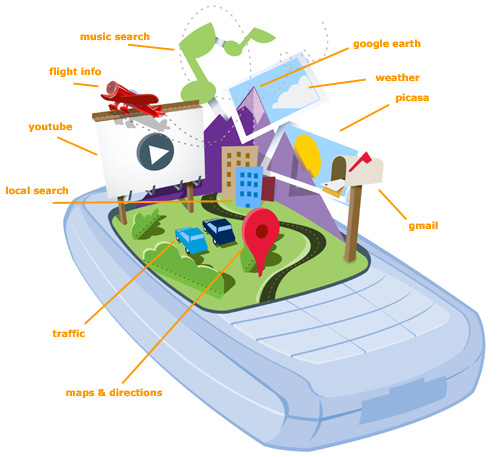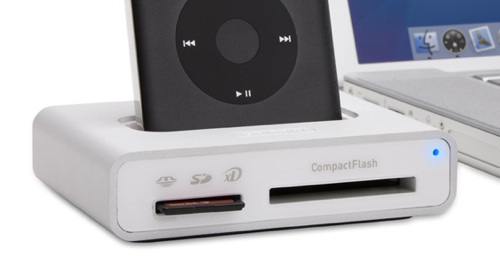By Evan Ackerman
If you haven’t read all about it elsewhere, here’s the deal with Google’s new open handset software platform (Android) and its first hardware prototype (the HTC Dream).

First of all, the GPhone is not [insert sad face here] an actual phone. Rather, it’s a development platform (called Android) designed to provide customized functionality and hardware/software integration in cellphones…. It’s an OS, basically (a Linux derivative). Detailed specifications should be released on November 12th (along with a preview of the SDK), but here’s the deal so far:
-Android will be a modular platform that hardware makers can customize, but Google suggests that it’ll support cameras, GPS, WiFi, and 3G.
-Android will support most Google services, including Gmail, Picasa, YouTube, and Google Maps; other companies can offer third-party commercial software through Android.
-Android (unlike Windows Mobile and Palm) will be FREE to manufacturers. Google will be collecting revenue from in-phone advertising.
The first phones running Android should be available in the us in the second half of 2008 from Sprint and T-Mobile. Forbes got a look a a demo platform from HTC which could be commercialized next year; they somehow forgot to take a picture of it, but you can read their description after the jump.
The phone, code-named “Dream” inside Google, looks somewhat like Apple’s iPhone: It is thin, about 3 inches wide and 5 inches long, and features a touch-sensitive, rectangular screen. Unlike the iPhone, the screen is also time-sensitive: Hold down your finger longer, and the area you’re controlling expands. The bottom end of the handset, near the navigational controls, is slightly beveled so it nestles in the palm. The screen also swivels to one side, revealing a full keyboard beneath. (The screen display changes from a vertical portrait mode to a horizontal display when someone uses the keyboard.)
The Dream design makes the core functions–e-mail, text documents and YouTube–readily available by putting icons that open those applications along the top of the screen. In its guts, the phone runs a virtual machine so that applications, like the browser, can launch once during a session, then reside in the background. That way, if someone sends you, say, a YouTube video link, you can run it immediately, without restarting the browser. The browser also downloads large files in stages to cut the time it seems to take to bring them onto the phone.
Taiwan’s HTC is already considering manufacturing a commercial version of Dream, which Chief Executive Peter Chou says could be available as early as the second half of 2008. “We’ve been working on [Open Handset Alliance] designs for almost two years,” he says. “This is the best one we’ve seen.”
[ Android ] VIA [ Forbes, Navigadget, Engadget, Gizmodo ]




